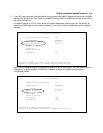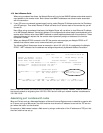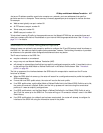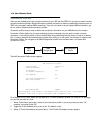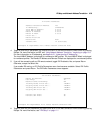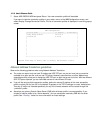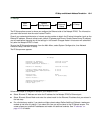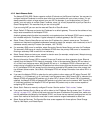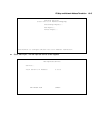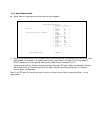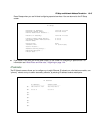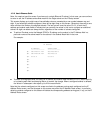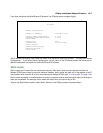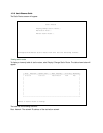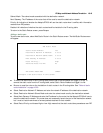10-12 User’s Reference Guide
The Netopia R7200 SDSL Router supports multiple IP subnets on the Ethernet interface. You may want to
configure multiple IP subnets to service more hosts than are possible with your primary subnet. It is not
always possible to obtain a larger subnet from your ISP. For example, if you already have a full Class C
subnet, your only option is multiple Class C subnets, since it is virtually impossible to justify a Class A or
Class B assignment. This assumes that you are not using NAT.
If you are using NAT, you can use the reserved Class A or Class B subnet.
■ Select Default IP Gateway and enter the IP address for a default gateway. This can be the address of any
major router accessible to the Netopia R7200.
A default gateway should be able to successfully route packets when the Netopia R7200 cannot recognize
the intended recipient’s IP address. A typical example of a default gateway is the ISP’s router.
■ Select Primary Domain Name Server and enter the IP address for a domain name server. The domain
name server matches the alphabetic addresses favored by people (for example, robin.hood.com) to the IP
addresses actually used by IP routers (for example, 163.7.8.202).
■ If a secondary DNS server is available, select Secondary Domain Name Server and enter its IP address.
The secondary DNS server is used by the Netopia R7200 when the primary DNS server is inaccessible.
Entering a secondary DNS is useful but not necessary.
■ Select Domain Name and enter your network’s domain name (for example, netopia.com). Netopia strongly
recommends that you enter a domain name.
■ Routing Information Protocol (RIP) is needed if there are IP routers on other segments of your Ethernet
network that the Netopia R7200 needs to recognize. If this is the case select Receive RIP and select v1,
v2, or Both from the pop-up menu. With Receive RIP set to v1, the Netopia R7200’s Ethernet port will
accept routing information provided by RIP packets from other routers that use the same subnet mask. Set
to v2, the Netopia R7200 will accept routing information provided by RIP packets from other routers that
use different subnet masks. Set to Both, the Netopia R7200 will accept information from either RIP v1 or
v2 routers.
■ If you want the Netopia R7200 to advertise its routing table to other routers via RIP, select Transmit RIP
and select v1, v2 (broadcast), or v2 (multicast) from the pop-up menu. With Transmit RIP v1 selected, the
Netopia R7200 will generate RIP packets only to other RIP v1 routers. With Transmit RIP v2 (broadcast)
selected, the Netopia R7200 will generate RIP packets to all other hosts on the network. With Transmit RIP
v2 (multicast) selected, the Netopia R7200 will generate RIP packets only to other routers capable of
recognizing RIP v2 packets.
■ Select Static Routes to manually configure IP routes. See the section “Static routes,” below.
■ If you select Address Serving Setup you will be taken to the IP Address Serving screen (see “IP address
serving” on page 10-21.) Since no two hosts can use the same IP address at the same time, make sure
that the addresses distributed by the Netopia R7200, and those that are manually configured are not the
same. Each method of distribution must have its own exclusive range of addresses to draw from.
■ Select Exported Services. The Exported Services screen appears with three options: Show/Change
Exports, Add Export, and Delete Export.




